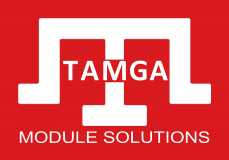The demand for faster, cost-effective, and sustainable construction has made Prefabricated Buildings one of the most preferred solutions across various industries. From residential housing to industrial facilities, prefabrication offers flexibility, durability, and efficiency that traditional construction methods often cannot match.
What Are Prefabricated Buildings?
Prefabricated Buildings are structures manufactured in a controlled factory environment and then transported to the project site for quick assembly. Unlike conventional construction, which takes place entirely on-site, prefabrication allows components such as walls, floors, and roofs to be pre-built, ensuring higher quality control and faster installation.
Advantages of Prefabricated Buildings
1. Speed of Construction
Prefabrication significantly reduces construction time. Since building components are manufactured off-site while groundwork is prepared, projects can be completed in weeks instead of months.
2. Cost Efficiency
By minimizing labor, material waste, and delays caused by weather conditions, Prefabricated Buildings provide a highly cost-effective alternative to traditional methods.
3. Flexibility and Customization
From modular homes to large industrial facilities, prefabricated solutions can be customized in size, layout, and design to meet specific requirements.
4. Sustainability
Modern prefabricated construction uses eco-friendly materials and minimizes waste, making it an environmentally responsible choice. Additionally, energy-efficient designs reduce long-term operational costs.
Applications of Prefabricated Buildings
- Residential Housing: Affordable homes, apartments, and temporary housing units.
- Commercial Spaces: Offices, retail outlets, and modular classrooms.
- Industrial Facilities: Warehouses, workshops, and manufacturing plants.
- Emergency & Remote Projects: Disaster relief shelters, military camps, and remote site accommodations.
Why Choose Prefabricated Buildings?
Opting for Prefabricated Buildings ensures faster project delivery, consistent quality, and long-term durability. Whether for a small housing project or a large-scale industrial site, prefabrication delivers the flexibility and reliability modern projects demand.
Conclusion
As industries continue to seek sustainable and efficient solutions, Prefabricated Buildings stand at the forefront of modern construction. With benefits ranging from cost savings to environmental responsibility, prefabrication is reshaping how we design and build for the future.
